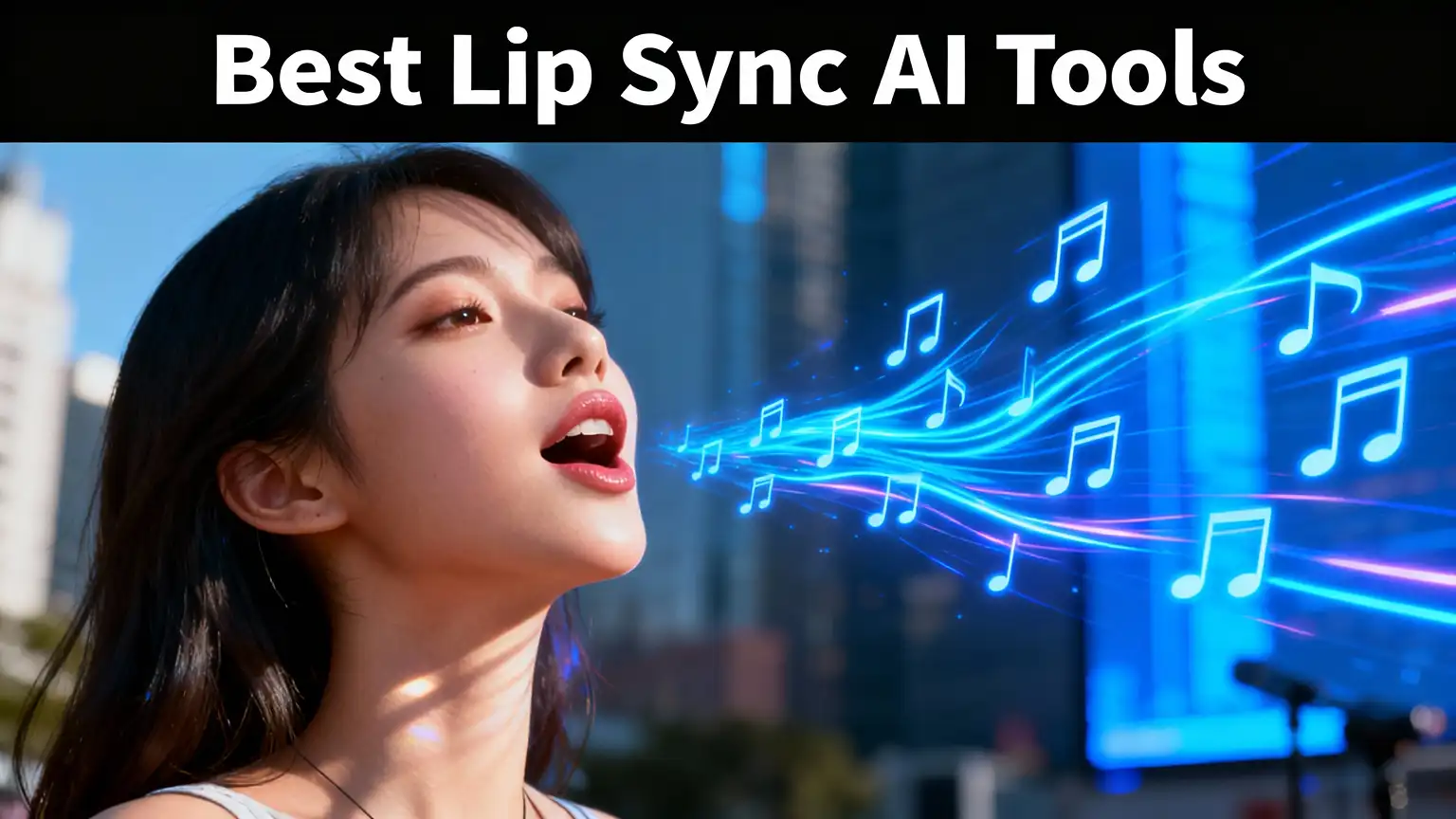What Is Lip Sync? Here Is a Full Guide!
Have you ever seen those videos where the dialogue doesn’t match the speaker’s lip movements? It can be frustrating and distracting. Therefore, understanding and mastering lip-syncing is crucial. In this post, we’ll explore everything you need to know about lip sync.
What Is Lip Sync?
Lip sync, short for lip synchronization, is the technique of matching a person’s lip movements to pre-recorded speech or singing. Think of it as a visual illusion: the audience sees the lips moving and hears the sound at the exact same time, making them believe the sound is being produced live.
This simple matching is crucial for a seamless and believable viewing experience. It’s a fundamental concept in media, from classic cinema to modern social media trends.
Why Is Lip Sync Important in Videos?
The importance of good lip sync boils down to one thing: viewer immersion. When the audio and visual elements are perfectly aligned, the brain processes the information effortlessly.
1. Believability: A mismatch, even a tiny one, is immediately noticeable and jarring. It breaks the illusion and makes the content look unprofessional or “off.”
2. Clarity and Comprehension: In educational or narrative content, poor sync can make it difficult for the audience to understand who is speaking or what is being said, especially when dealing with dubbing or voiceovers.
3. Professionalism: High-quality lip synchronization is a hallmark of professional production, whether it’s a major motion picture, a video game cutscene, or a polished YouTube video. It signals attention to detail and care for the final product.
How Does Lip Sync Work?
At its core, lip synchronization works by precisely aligning two separate tracks: the visual track (the video of the person’s mouth) and the audio track (the sound of the speech or song).
The process relies on identifying phonemes, which are the distinct units of sound in a language (like the ‘p’ sound in ‘pat’ or the ‘ee’ sound in ‘see’). Each phoneme corresponds to a specific mouth shape, called a viseme.
In traditional, manual lip sync, an editor or animator carefully adjusts the video frames so that the correct viseme appears on screen at the exact moment the corresponding phoneme is heard in the audio. Modern techniques, especially those using **AI (Artificial Intelligence)**, automate this process by analyzing the audio waveform and automatically generating or adjusting the mouth movements to match the required visemes, making the process much faster and more accurate [2].
How to Lip Sync Your Video
How to lip sync your video? Manual alignment is too time-consuming, you has better use an AI-powered tool. These tools analyze the audio and video and automatically shift the video frames or even adjust the mouth movements in the video to achieve perfect synchronization.
It’s recommended to try Dzine AI. It’s an overall image and video generation platform. Its multiple lip sync AI allows you to sync speech across multiple faces in one generated video using AI lip sync technology. This is the fastest and most efficient method for large projects or for correcting existing footage.
Step 1. Sign in and get your free trial.

Step 2. Select a face. Turn to Lip Sync playground and upload an image or video with faces, up to 4. Dzine supports facial recognition of people, animals, cartoons, and anime characters.

Step 3. Pick a voice and generate the audio. You can choose the most suitable language (9 languages now available) and voice for your talking avatar and paste the scripts. Then click “Generate,” and you can get the ultimate audio. Besides, uploading an audio file will be a more wonderful test.

Step 4. Generate the ultimate talking avatar. Everything has been prepared and you just need to click the “Generate” button for the unbelievable lip sync video.

Use Cases of Lip Synchronization
Lip sync is not just for music videos; it is a critical technique used across almost all forms of visual media:
Film and Television Dubbing: This is perhaps the most common use. When a movie is translated into a new language, the new dialogue must be perfectly synced to the original actors’ mouth movements to maintain the viewing experience.
Animation and Gaming: Every talking character in a cartoon, animated film, or video game cutscene requires precise lip sync. Animators use viseme charts and software to ensure the character’s mouth movements match the voice actor’s performance.
Virtual Avatars and Digital Humans: In the growing field of virtual reality and the metaverse, lip sync is essential for making digital characters feel real and interactive. AI-powered tools are often used to generate realistic mouth movements from text or speech input.
Social Media and Entertainment: Platforms like TikTok and Instagram have popularized lip sync as a form of creative expression, where users mime to popular songs, movie clips, or comedy routines.
Automated Dialogue Replacement (ADR): In film production, if a line of dialogue is recorded poorly on set, the actor will re-record it in a studio. This new audio must then be perfectly synced back to the original footage, a process known as ADR or “looping.”
Final Thoughts
Lip synchronization is a silent hero of modern media. While often overlooked when done correctly, its absence or failure is immediately jarring. It is the invisible bridge that connects the sound we hear with the person we see, ensuring that the story, the performance, and the message are delivered without distraction.
From the painstaking frame-by-frame work of early animators to the instant, AI-driven results of today’s tools, the goal remains the same: to create a flawless, immersive experience where the lips and the words are one.
FAQ
Q1. What is the difference between lip sync and dubbing?
A: Lip sync is the technical process of aligning mouth movements with audio. Dubbing is the creative process of replacing the original audio track of a film or video with a new one, usually in a different language. Lip sync is a crucial part of the dubbing process to ensure the new audio looks natural on screen.
Q2. Can I lip sync a video without special software?
A: Yes, you can. For simple social media content, you can often record the video while playing the audio in the background. For more control, most free or basic video editing apps allow you to manually shift the audio track to align with the video, which is the core of manual lip sync.
Q3. What is a viseme in the context of lip sync?
A: Viseme is the visual representation of a phoneme (a unit of sound). It is the specific mouth shape or facial expression that corresponds to a particular sound or group of sounds. For example, the sounds for ‘P’, ‘B’, and ‘M’ all share the same viseme because they all require the lips to be closed.
Q4. Why do live performers sometimes lip sync?
A: Live performers, especially in large-scale concerts or televised events, sometimes lip sync to ensure a flawless performance. This is often done when the performance involves complex choreography, difficult vocal ranges, or when the venue’s acoustics make live singing challenging. It guarantees the audience hears a high-quality, studio-perfect track.
Q5. How accurate is AI lip synchronization?
A: Modern AI lip synchronization is highly accurate, often achieving results that are difficult to distinguish from real speech. AI models analyze the audio’s phonemes and generate or adjust the video’s mouth movements to match the corresponding visemes in real-time. While minor imperfections can still occur, the technology is rapidly improving and is now the standard for many dubbing and animation projects.


